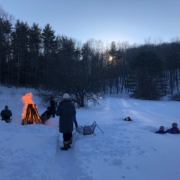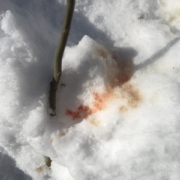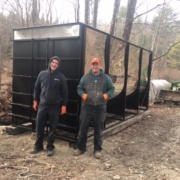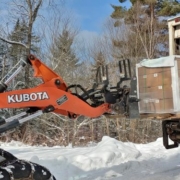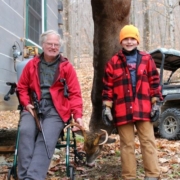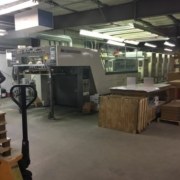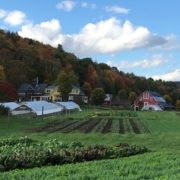We haven’t done a great job keeping the webpage up to date recently – our apologies for that. Part of my issue has been a long stretch of relatively warm and consistent weather that’s kept me away from a computer. Daytime highs came in between 29 and 39 degrees on every day between December 27 and January 22 in southwestern Vermont; this, coupled with low snow depths, made working in the woods irresistible.
While the temperatures have been unseasonable, it hasn’t been worrisomely warm. As a sugarmaker, I’m always conscious of the maple trees in winter, hoping they have a proper period of dormancy before the sugaring season, worried about the root damage that’s a possibility in winter when there’s not an insulating snowpack. Where I live anyway, the temps seemed to have stayed on the good side of warm, which is to say the sap mostly stayed in the roots, and my guess is that the duff layer and minor snow depth kept the frost from burrowing deep in the ground.
From a work perspective, it’s been a guilty pleasure. In late December, brothers Keith and Justin Severance came down to deliver a 4,000-gallon sugaring tank we bought from Reg Charbonneau, and we got it moved in to place relatively easily with some prybars and Yankee ingenuity.
Over the last month I’ve been able to rebuild a major section of mainline in one of our sugarbushes, working without gloves or snowshoes. The plastic tubing doesn’t handle well in frigid temperatures, as you can imagine, but high-30s leaves it reasonably pliable.
Whenever you rebuild you get a chance to do things better, and part of that often means thinning the forest. With the lines down I cut some ash that is likely going to die soon anyway from the emerald ash borer and become a line hazard. We’ll burn this wood next winter. There was enough frost in the ground to drag some logs across a wet area, but it was warm enough that I didn’t have to fight anything.
The weather started to change last week, when the snow came properly. We got about 3 inches out of the slush storm last weekend, but a lake effect conveyer has been dumping cold powder on top of it almost every day since – we’re probably up to a solid 12 inches in the valley, and up on the hills, where the first storm was all snow, depths are being measured in feet. I tried pulling the last few logs out over the wet spot yesterday, and promptly buried the tractor to its axle. Canadian air brought deep cold in last night, and when I tried starting a UTV to break a trail up the hill to the back reaches of the sugarbush, the ignition was frozen. Everything just gets fragile and miserable with the snow and cold.
That’s alright – it’s good, even. Ecologists are always talking about how plants and animals need a period of winter dormancy, but the same can be said for people. There’s always such a rush in fall to get things ready for winter, and if winter doesn’t come properly, it’s easy to just not stop working. Here’s to peace and the chance to catch up on the things in our hearts and in our heads.

